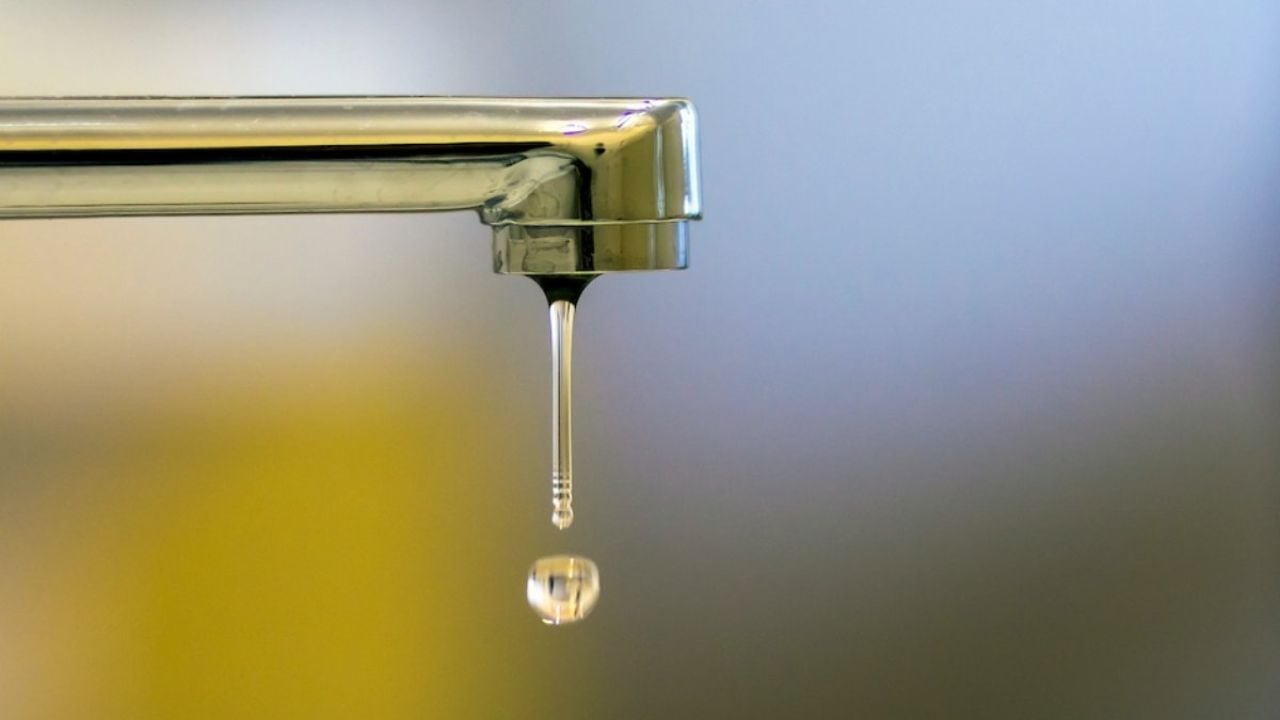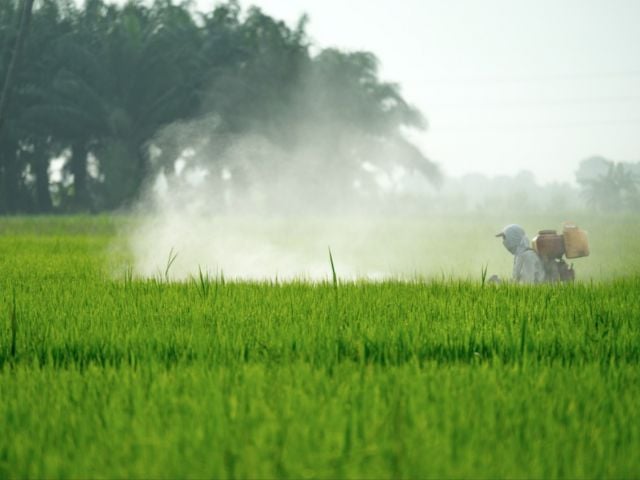
Correction appended December 15, 2023
Across the U.S., the Defense Department has contaminated potentially thousands of private drinking water wells with dangerous amounts of the toxic “forever chemicals” known as PFAS. But the DOD has refused so far to provide clean drinking water to people served by those wells.
Analyzing DOD records, EWG found that near 63 military bases in 29 states, 2,805 drinking water well samples were contaminated with PFOA and PFOS, the two most notorious and well-studied forever chemicals. The PFAS levels are above 4 parts per trillion, or ppt, but below 70 ppt, the level above which the DOD provides alternate clean drinking water.
The Environmental Protection Agency has proposed first-time standards requiring water utilities to ensure PFOA and PFOS levels stay below 4 ppt. But the agency has said the safe level of these chemicals in drinking water is much lower.
The test results revealing elevated levels of PFAS reflect DOD sampling conducted between 2021 and 2023.
DOD has not identified the specific wells that may have elevated PFAS, nor has it published an estimate of the total number of affected wells or the number of persons relying on such wells as a source of drinking water. The number of locations with elevated PFAS will likely increase as DOD compiles information for sampling conducted prior to 2021 and conducts sampling at additional locations suspected of PFAS contamination.
Military bases with high PFAS levels – but too low to trigger DOD support
|
Installation |
Well samples with PFOA or PFOS above 4 parts per trillion (ppt) but below 70 ppt |
|
Alaska |
|
|
Eielson AFB |
11 |
|
Galena Forward Operating Location |
4 |
|
Joint Base Elmendorf-Richardson |
4 |
|
Arizona |
|
|
Air Force Plant 44 |
2 |
|
Luke AFB |
2 |
|
Arkansas |
|
|
Little Rock AFB |
8 |
|
California |
|
|
Castle AFB |
9 |
|
March AFB |
36 |
|
Mather AFB |
30 |
|
Presidio of Monterey – Sharpe Army Depot |
12 |
|
Travis AFB |
1 |
|
Colorado |
|
|
Peterson SFB |
101 |
|
Schriever SFB |
4 |
|
Delaware |
|
|
Dover AFB |
13 |
|
Florida |
|
|
Avon Park Air Force Reserve |
16 |
|
Cid Corry Station |
12 |
|
Homestead Air Reserve Base |
20 |
|
Hurlburt Field |
16 |
|
Saufley FLD NAS |
4 |
|
Whiting FLD NAS |
35 |
|
Georgia |
|
|
Moody AFB |
2 |
|
Illinois |
|
|
Scott AFB |
8 |
|
Kansas |
|
|
McConnell AFB |
11 |
|
Maine |
|
|
Brunswick NAS |
5 |
|
Loring AFB |
34 |
|
Naval Support Activity Cutler |
30 |
|
Maryland |
|
|
NSF Thurmont |
4 |
|
Massachusetts |
|
|
Otis ANG (Joint Base Cape Cod – Massachusetts Military Reservation) |
17 |
|
Michigan |
|
|
K.I. Sawyer AFB |
6 |
|
MTC-H Camp Grayling Airfield (installation-wide PAI) |
90 |
|
Minnesota |
|
|
Camp Ripley |
20 |
|
Montana |
|
|
Fort William Henry Harrison /JFHQ MT |
6 |
|
New Hampshire |
|
|
Pease AFB |
80 |
|
New Jersey |
|
|
Joint Base McGuire-Dix-Lakehurst |
12 |
|
New York |
|
|
Plattsburgh AFB |
16 |
|
North Carolina |
|
|
Cherry Point Marine Corps Air Station |
2 |
|
Seymour Johnson AFB |
11 |
|
Oklahoma |
|
|
Tinker AFB |
25 |
|
Pennsylvania |
|
|
Biddle ANGB (formerly Horsham/Willow Grove ANG) |
11 |
|
Letterkenny Army Depot |
3 |
|
Mechanicsburg PA NAVICP |
6 |
|
Warminster NAWC AD |
179 |
|
Willow Grove NASJRB |
118 |
|
Rhode Island |
|
|
NAVAL AUX Landing Field |
42 |
|
South Carolina |
|
|
Beaufort SC MCAS |
3 |
|
McEntire Air Guard |
16 |
|
McEntire ANG AASF |
1 |
|
Shaw AFB |
205 |
|
South Dakota |
|
|
Ellsworth AFB |
30 |
|
Tennessee |
|
|
Arnold AFB |
8 |
|
Texas |
|
|
Goodfellow AFB |
25 |
|
Joint Base San Antonio – Lackland, Randolph, Ft. Sam Houston, Camp Bullis |
40 |
|
Reese AFB |
833 |
|
Sheppard AFB |
11 |
|
Virginia |
|
|
Oceana NAS |
13 |
|
Vint Hill Farms |
28 |
|
Washington |
|
|
Bremerton Naval Base |
2 |
|
Fairchild AFB |
367 |
|
JB Lewis McChord – Yakima Training Center |
67 |
|
Naval Base Kitsap Bangor |
1 |
|
Whidbey Island Naval Air Station |
77 |
Source: EWG, from DOD published drinking water testing under Section 345 of the National Defense Authorization Act for Fiscal Year 2022
At some military bases, more than 100 water samples from nearby wells tested positive for PFOA and PFOS above 4 ppt but below 70 ppt, according to DOD records. EWG couldn’t determine how many people these wells serve, but nearly one in seven Americans gets their water from private wells.
Starting under the Obama administration, the DOD has provided clean drinking water only to communities near military installations when levels of PFOA and PFOS top 70 ppt, the amount of the chemicals in drinking water the EPA had concluded was safe before it proposed its new drinking water standards.
Under the Biden administration, the EPA has proposed a much lower limit for PFOA and PFOS – 4 ppt for each – as enforceable standards under the Safe Drinking Water Act. But the DOD is waiting for the EPA to finalize the standard before providing safe drinking water to neighbors with PFOA and PFOS levels in private wells higher than that level but below 70 ppt.
Data published by the EPA show widespread PFAS contamination from a variety of sources, not only DOD sites, underscoring the urgent need for the EPA to issue strong standards.
This foot-dragging by DOD, of not providing alternate clean water based on updated standards, flies in the face of new science showing PFOA and PFOS are more dangerous than has been understood until recently.
In 2023 alone, the DOD has taken nearly 800 samples at private water wells above 4 ppt. The Pentagon is expected to conduct more tests.
In the National Defense Authorization Act for 2022, Congress required the military to publish these drinking water results.
Slow cleanup
The Pentagon has also been slow to clean up contaminated wells. Despite the human health risks from forever chemicals, the DOD’s spending to clean up PFAS contamination and other pollution has fallen to its lowest level in decades.
EWG has documented more than 450 military installations with PFAS contamination in the groundwater, drinking water or both. The DOD has said it is investigating suspected contamination at more than 700 bases.
PFAS are highly mobile when they enter groundwater. They are known as “forever chemicals,” since they do not break down in the environment and they can build up in people. Very low doses of PFAS have been linked to suppression of the immune system. Studies show exposure to very low levels of PFAS can also increase the risk of cancer, harm fetal development and reduce vaccine effectiveness.
There are no federal requirements for regular monitoring of pollutants in private wells, in contrast to public water systems. Tests are the only way to know whether a well is polluted.
If your well hasn’t been tested, contact a certified laboratory, especially if sources of contamination are suspected nearby.
Editor's note: Following publication of this article, the Department of Defense informed EWG that the data referenced in the original analysis referred to water samples, not individual wells.
The data published by EWG is based on well water testing that was disclosed to the public by the DOD. It does not include test data for additional locations that are suspected to be contaminated with PFAS.
The DOD has acknowledged that samples remain unpublished, making the exact total of contaminated wells unclear. The DOD has also not released an estimate of private wells contaminated with elevated levels of PFAS.
EWG can confirm that samples taken from wells near 63 military bases in 29 states are contaminated with PFAS.



